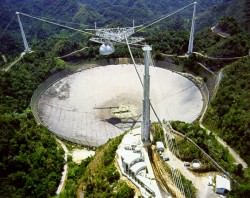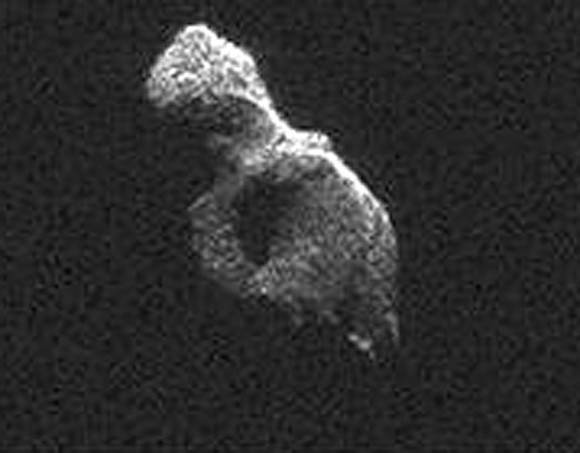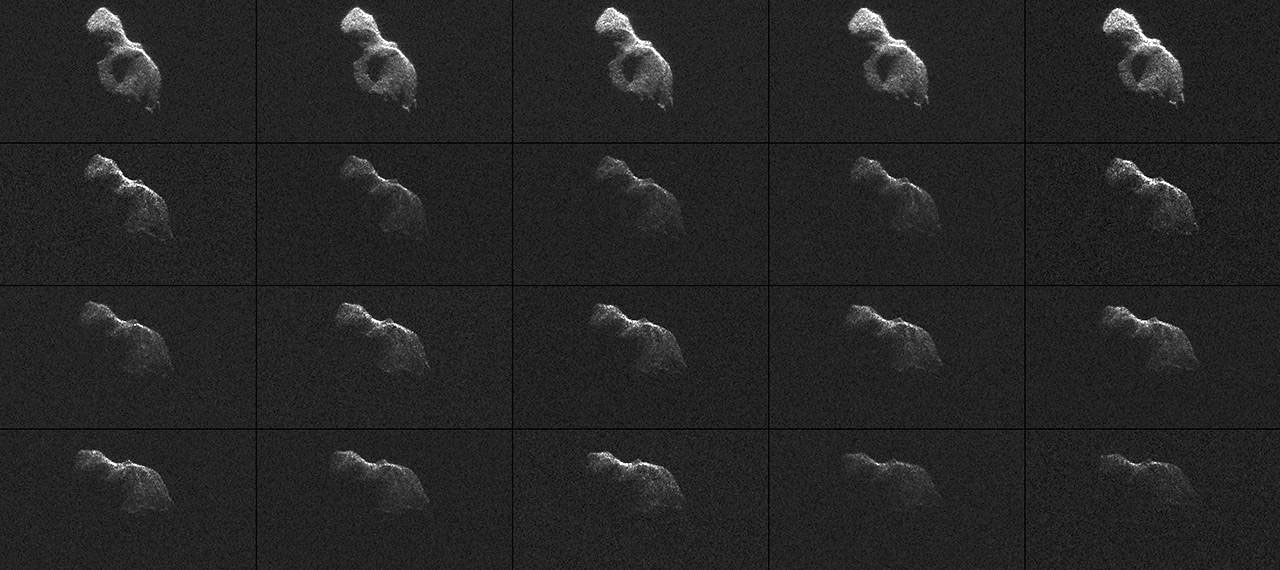On June 8, the 370-meter (about 1,300-ft.) asteroid 2014 HQ124 breezed by Earth at a distance of just 800,000 miles (1.3 million km). Only hours after closest approach, astronomers used a pair of radio telescopes to produce some of the most detailed images of a near-Earth asteroid ever obtained. They reveal a peanut-shaped world called a ‘contact binary’, an asteroid comprised of two smaller bodies touching.
About one in six asteroids in the near-Earth population has this type of elongated or “peanut” shape. It’s thought that contact binaries form when two or more asteroids get close enough to touch and ‘stick’ together through their mutual gravitational attraction. Asteroid 25143 Itokawa, visited and sampled by the Japanese spacecraft Hayabusa in 2005, is another member of this shapely group.
Radar observations of asteroid 2014 HQ124 seen here in video
The 21 radar images were taken over a span of four hours and reveal a rotation rate of about 20 hours. They also show features as small as about 12 feet (3.75 meters) wide. This is the highest resolution currently possible using scientific radar antennas to produce images. Such sharp views were made possible for this asteroid by linking together two giant radio telescopes to enhance their capabilities.
Astronomers used the 230-foot (70-meter) Deep Space Network antenna at Goldstone, Calif. to beam radar signals at the asteroid which reflected them back to the much larger 1000-foot (305-meter) Arecibo dish in Puerto Rico. The technique greatly increases the amount of detail visible in radar images.

Arecibo Observatory and Goldstone radar facilities are unique for their ability to resolve features on asteroids, while most optical telescopes on the ground would see these cosmic neighbors simply as unresolved points of light. The radar images reveal a host of interesting features, including a large depression on the larger lobe as well as two blocky, sharp-edged features at the bottom on the radar echo (crater wall?) and a small protrusion along its long side that looks like a mountain. Scientists suspect that some of the bright features visible in multiple frames could be surface boulders.
“These radar observations show that the asteroid is a beauty, not a beast”, said Alessondra Springmann, a data analyst at Arecibo Observatory.

The first five images in the sequence (top row in the montage) represent the data collected by Arecibo, and demonstrate that these data are 30 times brighter than what Goldstone can produce observing on its own. There’s a gap of about 35 minutes between the first and second rows in the montage, representing the time needed to switch from receiving at Arecibo to receiving at the smaller Goldstone station.
If you relish up-close images of asteroids as much as I do, check out NASA’s Asteroid Radar Research site for more photos and information on how radar pictures are made.


Is the rotation because of the rotation of Earth?
Or the rotation of the asteroid?
Or both?